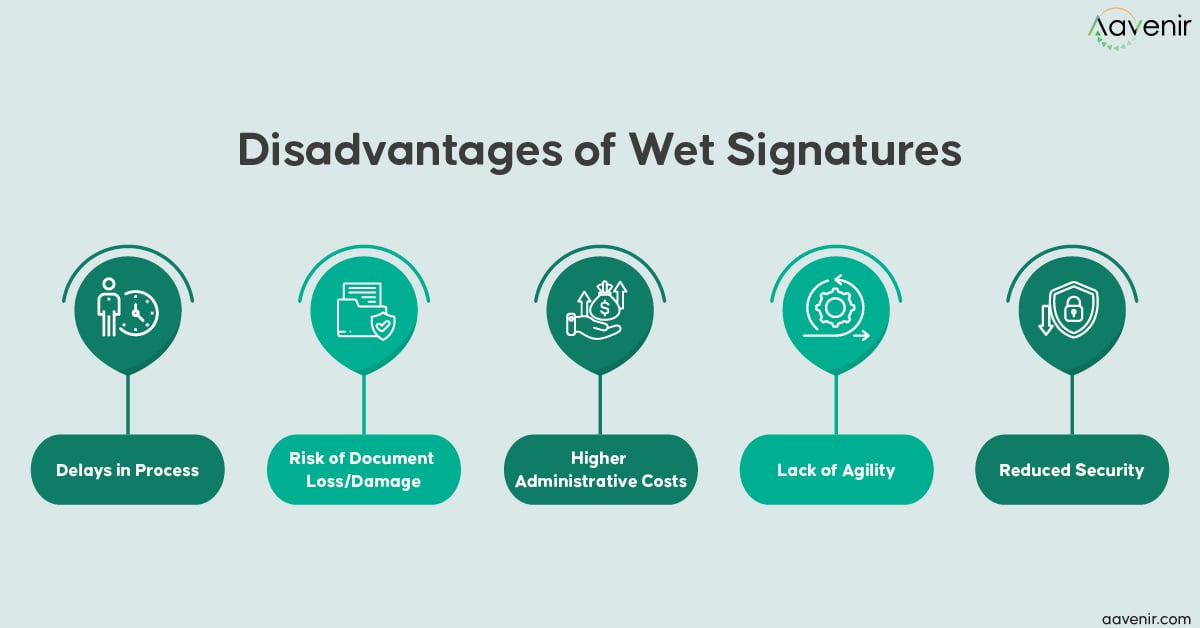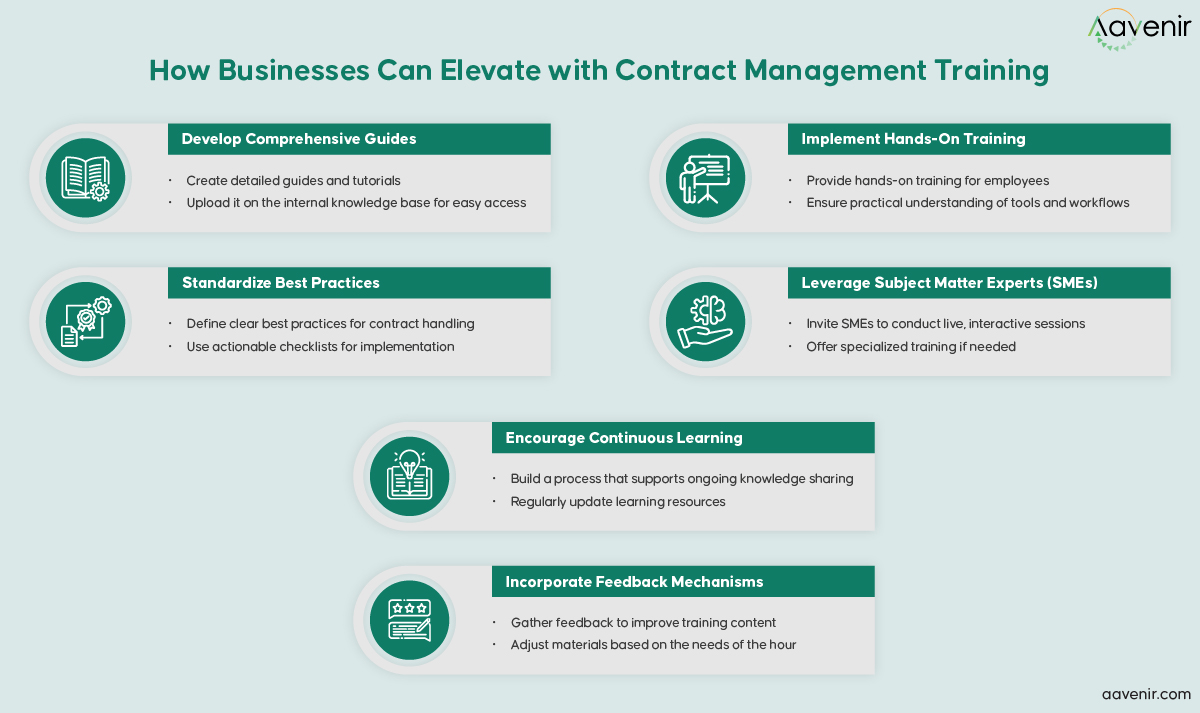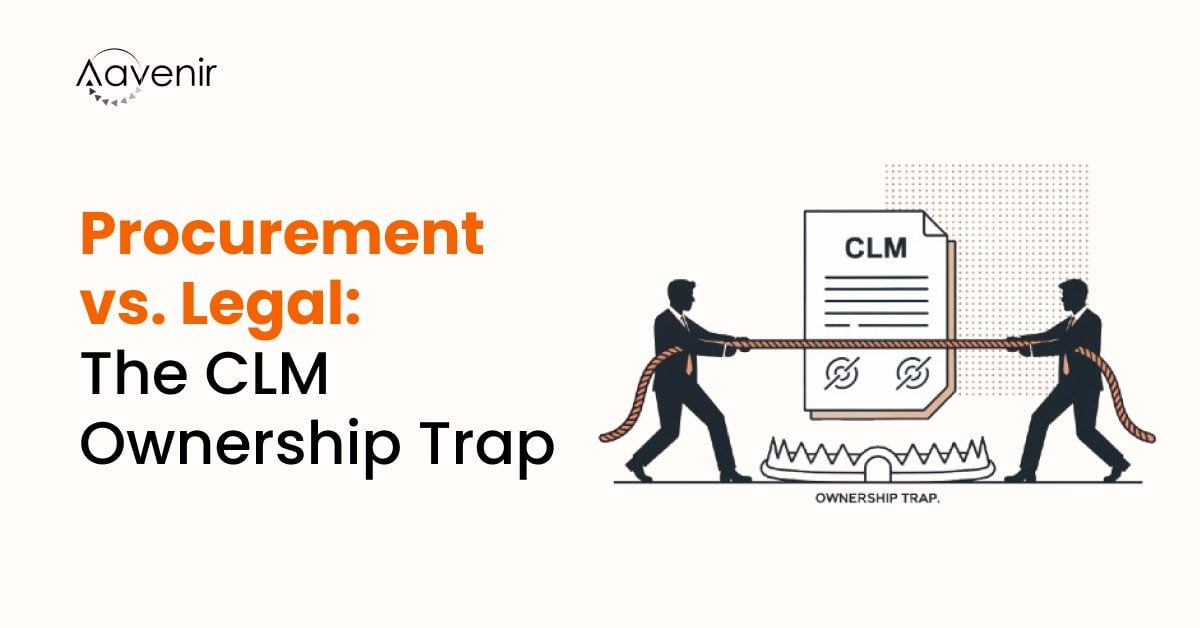Contract management is the backbone of successful business operations, defining terms, expectations, and accountability between partners, vendors, and clients. However, minor oversights can lead to costly mistakes, compliance issues, and strained partnerships.
Businesses are aware of what issues such as delayed projects and missed deadlines can do to their relationships with third parties and their organization, leading to financial losses and a bad reputation.
Companies need to examine the common pitfalls that may occur during contract management to address the root causes of inefficiencies. This will allow them to proactively build a more robust workflow rather than focus on quick patches.
In this article, we’ll explore the ten most common contract management mistakes companies make, from ineffective contract tracking and analysis (leading to missed deadlines and forgotten renewals) to lack of version control and audit trails and provide actionable strategies to help you avoid these pitfalls, ensuring you build a more streamlined, efficient, and compliant contract management process.
10 Contract Management Mistakes Businesses Need to Avoid
The common contract management mistakes listed below emerge due to oversights in various aspects of contract management. Some occur due to roadblocks in collaboration, and others arise due to a lack of agility. Here, we discuss what teams can do right away to tackle the underlying problems head-on.

Mistake #1. Disconnected Contract Storage and Centralization
Multiple internal and external stakeholders access each contract management workflow, resulting in the distributed storage of contract details across departments and software.
Teams will have to deal with various challenges, such as tracking contract status, collecting data for writing reports, and even losing critical documents. Moreover, it increases the likelihood of version control issues across departments.
How to Avoid the Mistake: Companies can avoid this mistake by choosing contract management software that offers a centralized contract repository, which serves as a single source of truth for all stakeholders.
centralized contract repository enables quick access to critical contract details, saving valuable time and reducing the risk of missing key obligations or deadlines. With advanced search capabilities, teams can instantly find specific clauses, renewal dates, or compliance terms. This search efficiency helps stakeholders avoid costly delays and ensures everyone can access the latest, most relevant information.
Moreover, a CLM solution with a centralized contract repository can ensure that compliance-related clauses are consistent across all contracts and automatically updated if regulations change. It also plays a key role in improving transparency, reducing communication gaps, and enhancing accountability.
Mistake #2. Ineffective Contract Tracking and Analysis
Tracking a contract closely throughout its lifecycle is crucial for ensuring all the deadlines are met and obligations are performed. Lapses, even unintentional ones, can lead to financial setbacks and the erosion of stakeholder trust.
Similarly, after a contract has been fully executed, teams need to analyze what went well and what needs to be improved. This is essential to discovering areas for improvement and keeping the contract workflow flexible, robust, and scalable in changing market conditions. When neither is done well, a huge chunk of actionable insights may slip through the cracks, and a lot of easy-to-deploy fixes might remain invisible.
How to Avoid the Mistake: Automated tracking through CLM tools plays a crucial role in ensuring that companies stay compliant with contractual terms and industry regulations. It also supports post-execution performance analysis. Fortunately, CLM software can automate both processes to deliver obligation reminders and real-time contract analytics to teams.
Besides, regular, proactive monitoring provides timely reminders of critical dates, such as renewal and payment deadlines, significantly reducing the likelihood of oversight. Additionally, the built-in analytics of CLM tools allow businesses to optimize their strategies by uncovering patterns and hidden issues quickly.
Mistake #3. Inconsistent Review and Approval Processes
Inconsistent contract review and approval workflows lead to accountability gaps that increase the risk of missing key stakeholder insights. These could be unique teams or departments and a varied mixture of vendors, suppliers, and other third parties. Consequently, the flow of review and approval of the documents during contract negotiations and execution changes, too.
How to Avoid the Mistake: Setting up predefined workflows for different contract types can significantly enhance process integrity by ensuring that each contract follows a customized path, addressing specific needs and compliance requirements. Predefined workflows allow companies to customize the approval paths for each type and help avoid delays, as team members aren’t left waiting on ambiguous steps—making it easier to track bottlenecks in real-time.
A centralized CLM platform should be used to manage this workflow from start to finish. CLM workflows with role-based access will also help promote stakeholder accountability by notifying relevant stakeholders at specific stages and ensuring they review and approve based on their expertise.
Putting all the details in a common place will enhance visibility across teams and departments, encouraging proactiveness and accountability. Moreover, it will also serve as an audit trail, allowing for troubleshooting in case of disputes.
Mistake #4. Relying on Legacy Signature Methods
Speed is essential for success in today’s global marketplace. Companies must move quickly to capitalize on opportunities, close deals, and optimize their revenue. Outdated signing methods such as wet signatures are a bottleneck in modern workflows.
Physical signing methods significantly delay processes, even if the signing parties are in one city. There is always the risk of documents getting lost and damaged in transit.

How to Avoid the Mistake: eSignatures in contracts streamline approvals and reduce administrative costs. Furthermore, various CLM tools already comply with legal standards like eIDAS (in the EU) and the ESIGN Act (in the US). Leveraging these tools can speed things up as legally binding contracts can get signed within minutes instead of hours or days. Additional benefits include contract agility, lower administrative costs, and a secure documentation process.
Mistake #5. Overlooking Compliance and Regulatory Requirements
Regular audits within a CLM system, including periodic reviewing of contract processes and documents, play a crucial role in identifying and addressing compliance gaps and ensuring that contract management remains aligned with current regulatory standards.
Moreover, the continuous evolution of laws and regulations in contract management can make it challenging for teams to stay updated. Integrating the latest regulatory changes across different jurisdictions often requires significant resources and careful attention.
How to Avoid the Mistake: An effective way to navigate this is by using contract management software to help track these changes and integrate them into the existing workflow. Businesses can quickly update their clause libraries and tweak the process from a fundamental level. Here’s our comprehensive list of the top contract mangement platforms to help you analyze and choose a software.
Besides, companies can proactively detect and correct misalignments with evolving laws or industry-specific regulations that make them vulnerable to legal penalties and reputational damage. Implementing both strategies can help avoid penalties and build credibility with various stakeholders such as suppliers, vendors, and clients.
Mistake #6. Lack of Version Control and Audit Trails
Contract documents evolve throughout their lifecycle. Various stakeholders, such as suppliers, vendors, and clients make edits and modifications to different degrees. These changes need to be tracked accurately to minimize confusion and disputes.
Poor version control of a contract document, with missing version tracking and audit trails, can lead to confusion and unauthorized changes that compromise the contract’s integrity. This can make it challenging to determine the next steps in the contract execution, opening the door to avoidable mistakes.
How to Avoid the Mistake: Version control and audit trails are crucial contract management software features that promote transparency. They help teams track every change, ensuring all stakeholders work on the latest version and preventing unauthorized modifications.
Generating comprehensive version control and audit trail reports detailing every action taken within a contract’s lifecycle helps minimize the risk of unintended changes and preserve document integrity. Besides that, it provides real-time updates on any adjustments made to the contract, minimizing the risk of unintended changes and preserving document integrity.
Mistake #7. Insufficient Contract Management Training
Every professional handling contract document should be aware of the process, tools, and regulations and know the stakeholders well. It is crucial to build the contract management process from the ground up, facilitating knowledge sharing and encouraging team members to learn. Approaching training as an afterthought may make integrating the learning elements into the process challenging.
How to Avoid the Mistake: Adequate, hands-on training for new and existing employees on best practices and compliance requirements helps minimize the chances of oversights, reduces errors while authoring contracts, ensures you never miss an obligation, and optimization opportunities.
Businesses need to invest to ensure their employees and external stakeholders have all the information they need to perform their daily operations while managing a contract throughout its lifecycle.
This involves creating guides, tutorials, and standardized best practices for various phases of contract management. Additionally, bringing in subject matter experts (SMEs) to conduct live, interactive training sessions to enhance team capabilities can be helpful.

Mistake #8. Using Multiple and Complex Tools
Modern contract management workflows are run by cross-functional teams leveraging various tools and technologies. As we discussed earlier, this can lead to a disjointed system that can make contract handling difficult. In short, a bloated tech stack can hinder productivity and increase training needs.
Teams spending several hours a day juggling multiple and complex tools will struggle with efficiency. Each interface change will require them to readjust and refocus, slowing the overall workflow.
How to Avoid the Mistake: Businesses can adopt an all-in-one contract lifecycle management solution, such as Aavenir Contractflow, to run their entire contract management workflow from one place. The platform provides a unified view of all contract activities at a glimpse in a user-friendly interface.
This approach keeps the tech stack lean, training workflows short, and overhead costs low. Moreover, as you can access all your contracts in one place, end-to-end contract visibility throughout its lifecycle is easily achieved.
Mistake #9. Not Involving Relevant Stakeholders
Different stakeholders work on the contract documents in different ways at different phases of the management lifecycle. It is crucial to identify all of them from the start and involve them in the review, negotiation, and approval processes as required.
Forgetting to collaborate with the right personnel for the relevant action items can lead to bottlenecks. Apart from slowing down the contract execution process, it makes companies appear unprofessional, which may impact relationships.
How to Avoid the Mistake: Engaging relevant stakeholders early in the process helps avoid these kinds of mistakes in contract management and enhances contract effectiveness. This reduces the risk of conflicts, delays, and costly revisions. Teams can also avoid misalignment in stakeholder interests and adhere to the company’s strategic objectives while fulfilling the contract obligations.
Choose a contract lifecycle management (CLM) solution that helps streamline stakeholder communication by offering centralized, real-time access to contract data, status updates, and collaboration features, greatly minimizing delays.
Mistake #10. Using Inconsistent Language
Clear communication is one key ingredient in making a contract successful for different stakeholders. When everyone is on the same page about deliverables, obligations, and expectations, the entire contract lifecycle becomes smooth and streamlined.
However, inconsistent terminology and ambiguous language can have the opposite effect. Third parties may interpret the obligations differently, increasing the chances of misunderstandings and disputes.
Moreover, internal teams may need standardized clauses to understand each other, which can result in overlooked responsibilities and commitment to unintended terms. When unchecked, it can quickly translate to poor compliance and sour relationships.
How to Avoid the Mistake: To tackle this challenge and establish company-wide procedural consistency, an effective approach is to utilize standardized contract templates. Standardizing contract language minimizes misunderstandings and disputes.
CLM tools with clause libraries promote standardized language and reduce risk. Empower your team to leverage CLM solutions and implement a default clause library that ensures uniformity across contract documents.
It can also be helpful to review the contract templates and adapt to regulatory changes regularly. This plays a crucial role in minimizing misunderstandings between internal and external partners and creating straightforward contracts that are easy to interpret.
Next Steps: Evaluate Your CLM Process
Businesses looking to elevate their contract management workflow throughout the lifecycle by avoiding the above ten mistakes in contract management should start by analyzing their existing processes. A robust CLM software fosters transparency and responsiveness, empowering teams to work more effectively and reduce delays across the contract lifecycle.
Aavenir is an all-in-one AI-powered contract lifecycle management solution that offers everything, including workflow automation, clause library, AI-powered analytics, collaboration, and more. Teams can gain full visibility over the contract lifecycle, ensuring faster approvals and enhanced compliance.
We’d love to hear how you have been preventing contract management mistakes.
Ready to level up your contract management process? Contact us today for a free personalized demo.
Frequently Asked Questions
1. What are the most common mistakes in contract management that businesses should avoid?
Common mistakes include poor tracking, inconsistent language, outdated signing methods, lack of compliance, and failure to involve stakeholders, all of which lead to inefficiencies and compliance risks.
2. How can a centralized contract repository improve contract management efficiency?
A centralized repository improves accessibility, simplifies tracking, ensures version control, and reduces the risk of lost documents, thereby enhancing contract visibility and management.
3. What tools or strategies can help track important contract dates and deadlines?
Automated reminders, performance dashboards, and contract management software can help monitor critical dates, ensuring timely renewals and compliance.
4. Why is it important to have a structured review and approval process for contracts?
A structured process reduces errors, ensures alignment with business objectives, and involves all necessary stakeholders, minimizing delays and disputes.
5. How can businesses ensure compliance with regulatory requirements in their contract management practices?
Update processes regularly with regulatory changes. Use compliance-tracking software and consult legal experts to maintain alignment with laws.
6. What are the three types of mistakes in a contract?
Mistakes in contracts are typically unilateral, mutual, or clerical errors, each affecting contract enforceability differently.
7. What are the symptoms of poor contract management?
Symptoms include missed deadlines, compliance breaches, inefficient processes, frequent disputes, and lost revenue opportunities due to poorly managed obligations.



